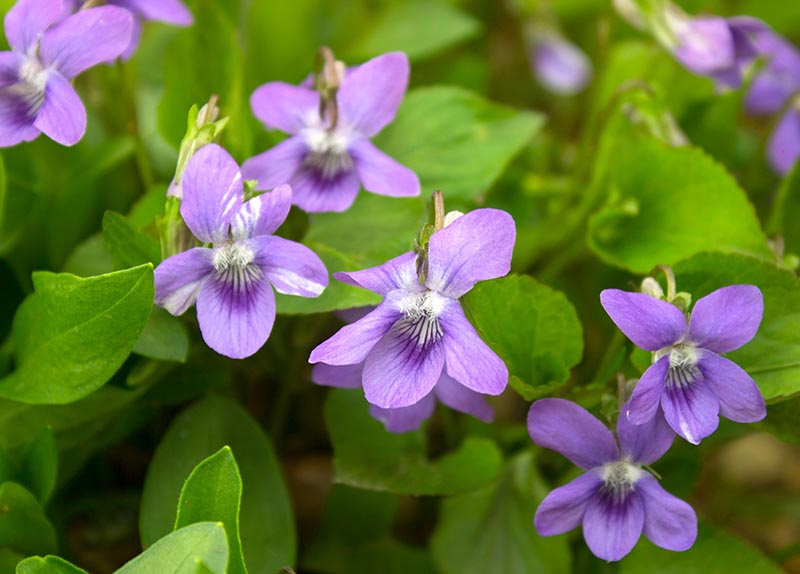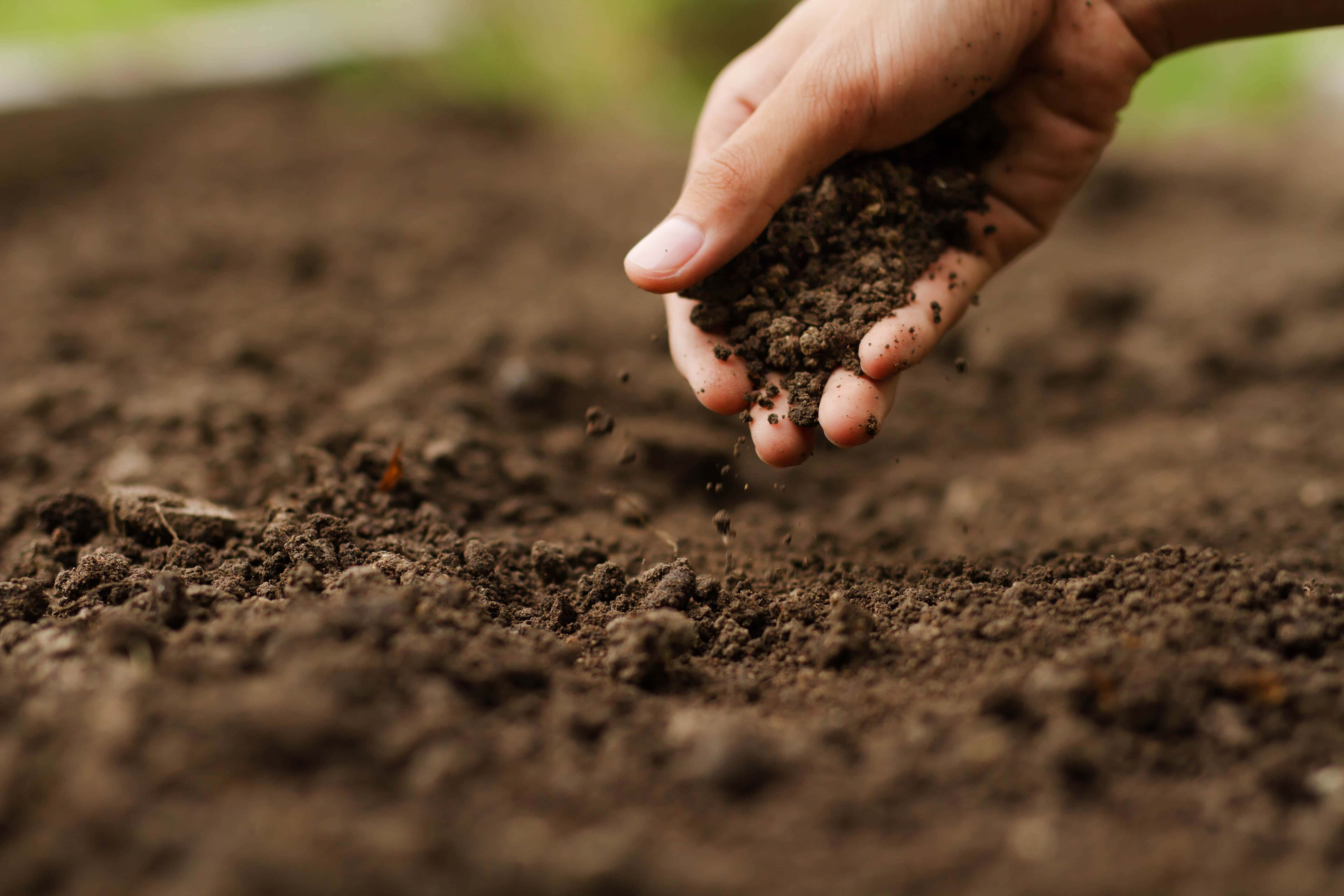How to Grow Wildflowers From Seeds: Step-By-Step Guide
-
Pete Ortiz
- Last updated:

Did you know that you could also grow wildflowers from seed? A wildflower is typically any flower that grows without being sown or planted. However, you can grow wildflowers in your yard from a selected cultivar or their seeds. Growing wildflowers from seeds are advantageous because you get a greater choice in color and variety of your plants, especially if you want to start your varieties. However, this process can be overwhelming, especially if you are new to gardening.
To help alleviate the confusion and misinformation about propagating wildflowers from seeds, we have covered the basics with this easy-to-follow guide. Read on to learn more.
The Process of Growing Wildflowers From Seeds
1. Identify the Ideal time to Plant wildflowers in Your Area
For seeds to germinate, the average soil temperature should be at least 55°F or warmer. Usually, in spring, the air tends to warm up faster than the soil. One common mistake that gardeners make is to sow their wildflowers seeds when the air is warm but the soil is still cool. In such a case, the seeds will stay dormant until the soil is warm enough to promote germination. Therefore, you must check your soil temperature before sowing your seeds.

Planting Wildflowers in Cold Climates
If you reside in an area that frequently experiences freezing temperatures and snowfall, it is pertinent that you wait until the threat of frost has passed. Even during the spring, when temperatures are warmer, there may still be a lingering threat of frost that can easily destroy young plants and freshly sprouted seeds.
In fact, late spring frost is considered the greatest danger to spring-planted wildflowers. To avoid the inconveniences of a cold snap, ensure that you plant your wildflowers after the last spring frost date for your area. You can find this information in the first frost date chart.
Even after the dangers of frost have passed for the season, you should wait for the soil and air to warm up enough to offer favorable conditions for the plants to grow and thrive.

Planting Wildflowers in Warmer Climates
If you are planting your seeds in the intense heat associated with summer, it is better to plant the wildflowers in early spring. The seeds will sprout as soon as the soil temperatures reach 55°F. This allows the young perennial wildflowers to establish themselves minus the excessive heat of summer. This way, the plants will be stronger and have a longer life span, giving the wildflowers enough time to bloom before the summer heat arrives.
If you reside in warm, dry areas, as it gets hot outside, it is best to plant your wildflowers at the onset of rainfall. If planting in late spring or the spring temperatures rise early, you need a regular watering regimen for your plants to establish.
Gardeners from these climate zones should plant native wildflowers or drought-tolerant wildflower species for optimum results. Furthermore, if you do not have access to water or the climate gets too hot in your area, you can opt to store your seeds in an airtight container and wait until fall before you plant your wildflowers.
2. Soil Preparation
Better preparation equates to more wildflowers growing in your yard. You can remove grasses, weeds, and other plants by using hand tools, a rototiller, smothering, or organic herbicides. This way, you get to create sufficient room for the wildflowers to grow and thrive.

Importance of Soil Preparation
- Soil preparations will allow your seeds to germinate better in your yard without other plants competing for resources such as water and nutrients.
- One of the biggest threats to the growth of wildflowers is vigorous growers like grasses and weeds. Therefore, removing them will give your plants a better chance of survival.
- Loosened soil makes the root growth of wildflowers much easier.
- Seeds require better contact with soil and sufficient sunlight to germinate with strong, healthy roots.
- When wildflowers grow without a lot of competition in the early stages, they are better suited to compete with grasses and weeds that might try to grow back in your flowerbed.
Experts do not recommend¹ growing wildflowers in the middle of a grass field. If you scatter your wildflower seeds without removing other plants in the surrounding area, you will be sorely disappointed. Chances are high that your wildflower seeds will not germinate.
- Related Read: How to Grow a Wildflower Garden – 10 Tips & Tricks
3. Scattering Your Wildflowers Seeds
Once your site has been prepared, you can then proceed to scatter your seeds. It is best to do this on a windless day. You should avoid days with driving rain and high winds because they can easily wash away your seeds. However, days with regular rain are ideal because they will help assist with your watering regimen.

- First, separate your seeds into two equal parts. Place each half of the seeds into a bin, bucket, bowl, or any container with lots of extra room.
- Mix the seeds with sand by adding eight parts dry sand to one part seeds. Sand is an ideal growing medium because it helps spread the seeds more evenly and allows the gardener to see where the seeds have been sown. Use dry sand because wet sand tends to clamp, preventing even seed application.
- Ensure that the seeds are spread as evenly as possible. If you opt to use a seed spreader, it is wise to do a practice run first so that you get comfortable with the sowing process. You will also be able to understand how much seed is scattered by the spreader and at what speed.
- For even seed scattering, scatter your wildflower seeds in two sowings. Sow the first half of the seeds as you walk on the planting site from north to south. Scatter the other half of the seeds as you walk in the opposite direction.
It is important to use the correct number of seeds¹ as recommended for your wildflower species or growing mix. You might be tempted to add more seeds to increase the chances of survival, but this usually has the opposite effect. When seeds are densely sown, this can create competition among the wildflowers, causing them to become weak or choke each other out.
4. Pressing the Seeds Into the Soil
After scattering your seeds, it is pertinent that you compress the wildflower seeds until they have good contact with the soil.
- If you are planting in a small patch, use your feet to press the seeds into the soil.
- For medium-sized garden beds, you can place a piece of plywood on the soil and walk on it to evenly distribute your weight on the soil.
- You can use a seed roller attached to a tractor to compress the seeds if you are planting on a large piece of land.

Seed compression is important because it creates better soil-seed contact to speed up germination. It also allows for nutrients and moisture to move to the seeds as well as prevents water, wind, and other natural forces from removing the seeds once planted.
Unlike other plant seeds that need to be planted in a hole and covered in soil, wildflower seeds can be left uncovered. This is because these seeds are often tiny and require sunlight exposure to germinate. However, there are two exceptions to this rule.
- If you are planting wildflowers on a steep bank where rainwater can carry the seeds downhill and possibly clump them together, it is best to cover the seeds with a layer of straw.
- In addition, if you are planting in an area prone to high winds, which can also reposition the seeds, a straw layer will help keep the seeds in position.
5. Watering
After your seeds are well compressed into the soil, you should give your plant a gentle, thorough soaking. The seedlings, the soil, and wildflowers growing in your yard¹ need to stay constantly hydrated until they grow past 4–6 inches tall. This typically takes between 4 to 6 weeks.
If you live in a predominantly rainy area, Mother Nature will provide your wildflowers with enough rain to thrive or at least keep the weather conditions mild enough to prevent dehydration of your plants. However, if your area is hot and sunny, you should regularly water your wildflowers, preferably in the morning.
A regular watering regimen is important since wildflower seeds are not usually buried beneath wet soil. They have constant sunlight exposure, requiring you to water them regularly so that they can stay hydrated enough to germinate. Furthermore, before the seedlings reach 4 to 6 inches tall, the roots are usually not established enough to access moisture from groundwater.

 Conclusion
Conclusion
Wildflowers are beautiful, low-maintenance plants that can significantly improve the aesthetic appeal of your yard. They are also cheap and can be easily grown from seeds. If you are a newbie gardener, growing wildflowers from seed can sometimes be overwhelming. However, with the right growing conditions and the right supplies, your wildflowers will thrive in no time.
Related Read:
- 10 Wildflowers That Grow in Washington, D.C. (Identification Guide With Pictures)
- 20 Wildflowers That Grow in Michigan (Identification Guide With Pictures)
Featured Image Credit: Nikki Yancey, Shutterstock
Contents


